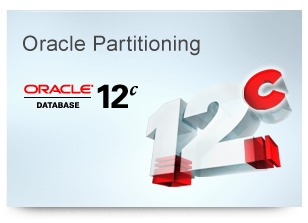

We named the partitioned tables, SALES_FORECAST_PR and ACTUAL_SALES_PR to indicate that we have range partitioned the tables. Each table is partitioned into 10 partitions, and the tables are partitioned based on range of values of the column PART_ID. To demonstrate the advantage of partitioning, we created two partitioned tables corresponding to the two tables, SALES_FORECAST and ACTUAL_SALES. In this article, we will focus on the practical use of range partitioning and apply it to our case study. (Refer to Oracle documentation for details on these partitioning techniques.) Oracle8 supported partitioning by range, hash, and composite partitioning. Oracle provides several ways to partition the tables and indexes. When the volume of data grows, it is beneficial to partition the data in a table into multiple partitions. In the next section, we will see how partitioning can improve the performance of the above two queries.

It took 3 minutes 57.04 seconds to execute this query. The first task can be accomplished by the SQL in Listing2: SELECT COUNT(*)

The case study involves a hypothetical sales application, the main functions of which are forecasting sales, collecting actual sales data, and comparing actual sales with the forecast. We will begin with a simple case study to demonstrate how you can use partitioning to improve your applications’ performance. This article takes a practical approach to illustrate the impact of partitioning on the query performance. Very few of these publications provide a SQL programmer’s view to partitioning - the way partitioning helps to improve the performance of SQL queries. However, most of these publications focus on the database administration aspects of partitioning, including the ease of space management, ease of reorganization, selective unavailability during maintenance, and so on. There has been a significant amount of documentation and publications on various aspects of partitioning. Any assistance would be greatly appreciated.Introduced with Oracle8, Oracle partitioning has matured over the years, through Oracle8i and Oracle9i. I realize that this is a very general overview of what I am looking to accomplish. Send an email to DBA with list of tables that will require new tablespaces. This is accomplished by checking every max_partition_date and partition_frequency in PARTITION_STAT table. Check to see if new tablespaces are required and send email notification to DBA if tablespaces are needed.
#Oracle database partitioning update#
For every new tablespace: create new partion and update the PARTITION_STAT tableģ. Create partitions for the new tablespaces. Update the last_tablespace_rowid in the TABLESPACE_STAT tableĢ. All rowid's greater than last_tablespace_rowid are new tablespaces. This is done by checking TABLESPACE_STAT.last_tablespace_rowid. Check to see if a new tablespace has been created. Need to create a procedure that will run automatically. Create a table that will contain the rowid of the last tablespace created. Note: This table will need to be udpated whenever a new table using partitioning is created.Ģ. daily, weekly, etc), partition_name, max_partition_date Create a table that will contain info about the partitioned tables.Ĭolumns: table_name, tablespace_name, partition_frequency (e.g. The partitions are stored in their own tablespaces.ġ. Several large tables need to be partitioned on a daily basis.

Has anyone done this before and if so, am I on the right path? Any examples, advice would be appreciated. I'm looking for some insight regarding the automation of table partitioning. With this in mind, I've included a "spec" of what I'd like to accomplish. in PL/SQL which can be sheduled via a UNIX crontab.
#Oracle database partitioning code#
1.7K Training / Learning / CertificationĪfter further analysis, I've decided that I would like to code a procedure, etc.165.3K Java EE (Java Enterprise Edition).7.8K Oracle Database Express Edition (XE).3.7K Java and JavaScript in the Database.


 0 kommentar(er)
0 kommentar(er)
